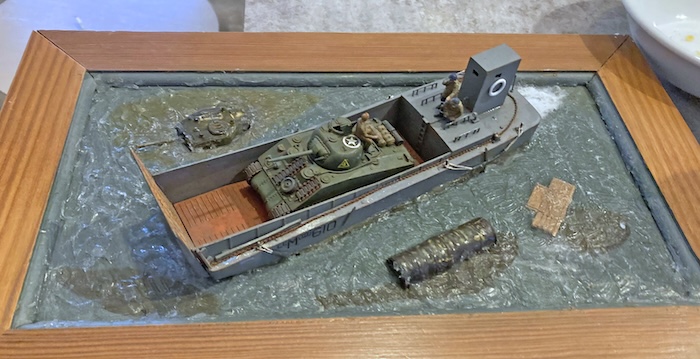
with Steve Noble
Objective
Build a seascape for an Airfix Landing Craft (LCM 3 & Sherman tank, Airfix Vintage Classics Range)…
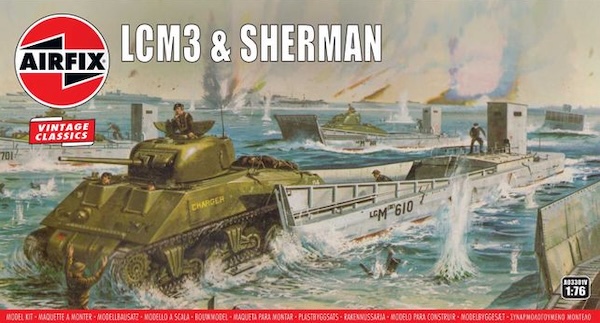
…using clear silicone sealant in place of commercial resin products. Given the low cost of materials, it was possible to do a test-build and carry the learnings into the finished build.
Historical Information
The LC(T) was designed as a shallow draft boat with a front ramp to load/offload its cargo. Fully loaded its flat hull and shallow draught could leave it unstable in cross seas or high waves. Under these conditions the craft could be breached by a wave and sink. Wherever possible, crews would sail with the prevailing sea to avoid this.
On D-Day the worst case of this occurred when the American Navy launched the Duplex Drive swimming tanks too far from shore and into a strong current. Driven off course, rather than go with the sea, the tank crews tried to correct their course to their designated landing area on Omaha Beach. Coming cross-side to the sea, the tanks were swamped and sank with nearly the total loss of the force. Without the tanks the infantry on the beach had to fight largely unsupported.
The other unexpected hazard for the landing craft and their tanks was that the naval and air bombardment had been so heavy that giant craters littered the beaches. Once flooded a tank could be offloaded and drown having driven into these invisible craters.
The trial build
The project began by using a rough mock-up of the LCT using a block of wood and an old picture frame as the base. The glass was removed and replaced with stiff coloured card.
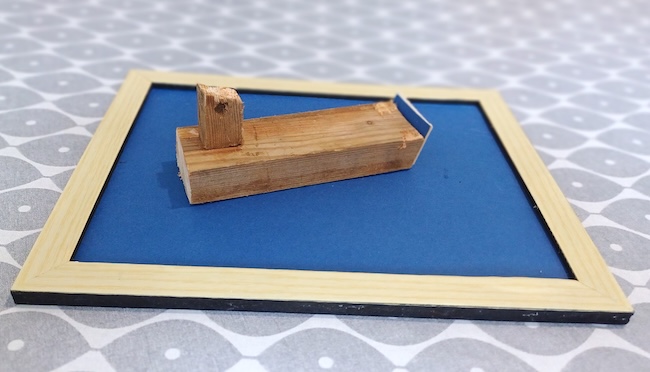
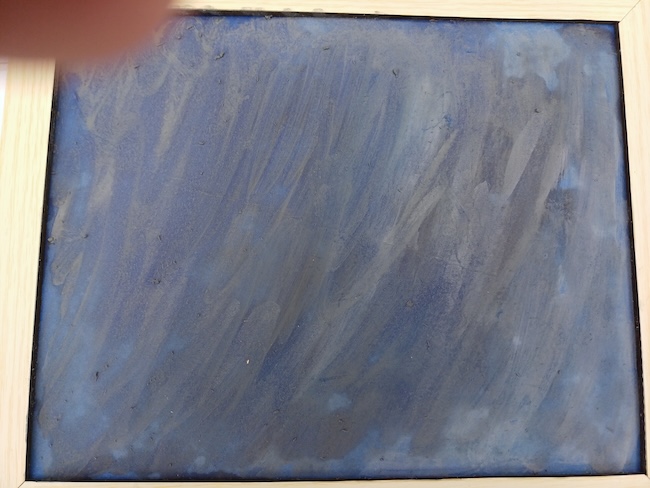
The card was painted in a selection of colours and tones. This would show through after the silicone was applied. The silicone was put onto the card in beads with the wake tailing off from the vessel. While initially lacking a look of waves, further working of the silicone would change this.
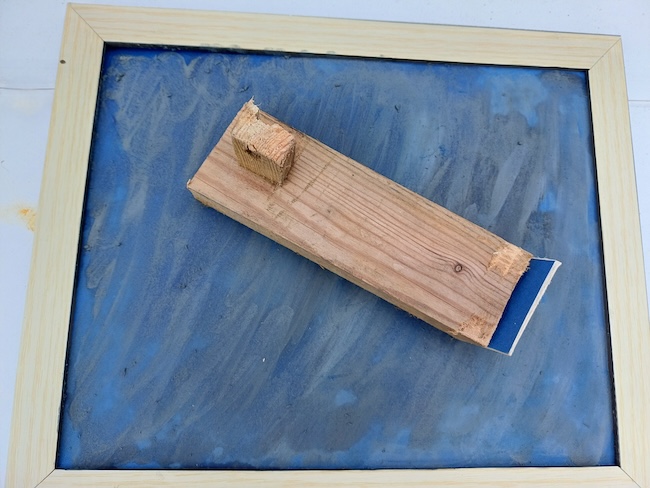
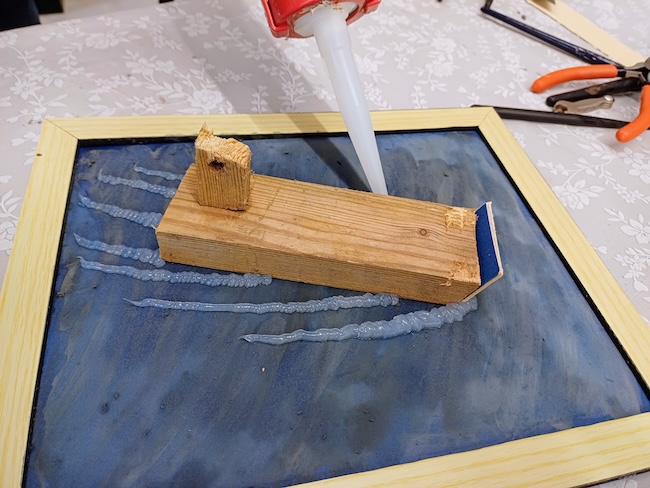
Bearing in mind the earlier comments of the need to sail with the sea, the waves in the swell were laid down at different angles to the wake. The wave pattern was built up in stages and textured with an old paint brush using a stippling motion. This continued until the wave pattern filled the space.
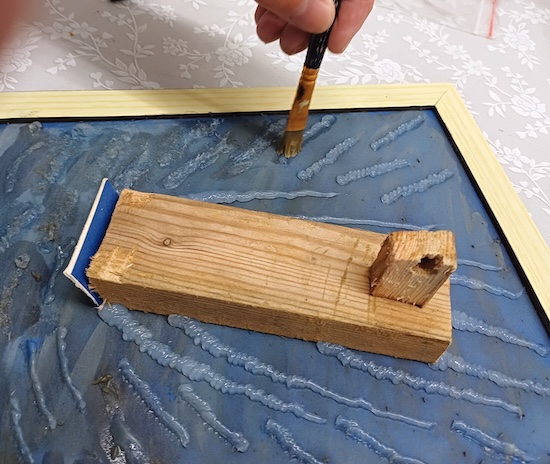
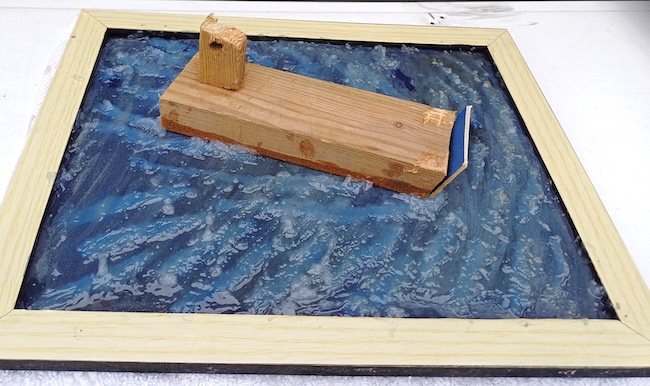
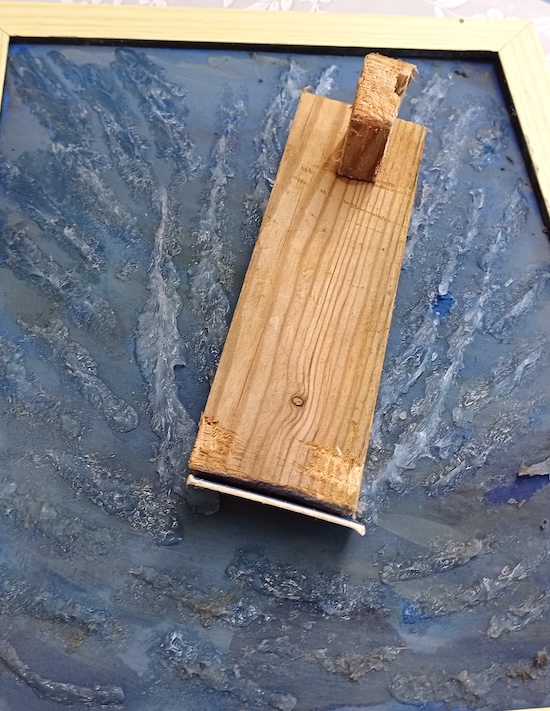
To bring the textures together, two coats of gloss varnish were applied. With the trial successfully completed, the final build with the finished Airfix LC(T) was carried out. Using the same techniques, the following differences and learnings were noted.
A deeper picture frame was required to let the LC(T) to sit at the correct height in the water. The extra depth required more sealant giving more clarity to the water. On the trial, no sign posting had been used to put the model in context. The submerged turret of a drowned Cromwell tank plus other wreckage was added placing the scene close to the beach.
The wake was made more visible by attaching a small amount of fibrous stuffing used in soft toys. The diorama, when entered into a “Classic Airfix Kit” competition took 2nd place by a public vote only a few points behind the winner.
Steve N.
Gallery Images

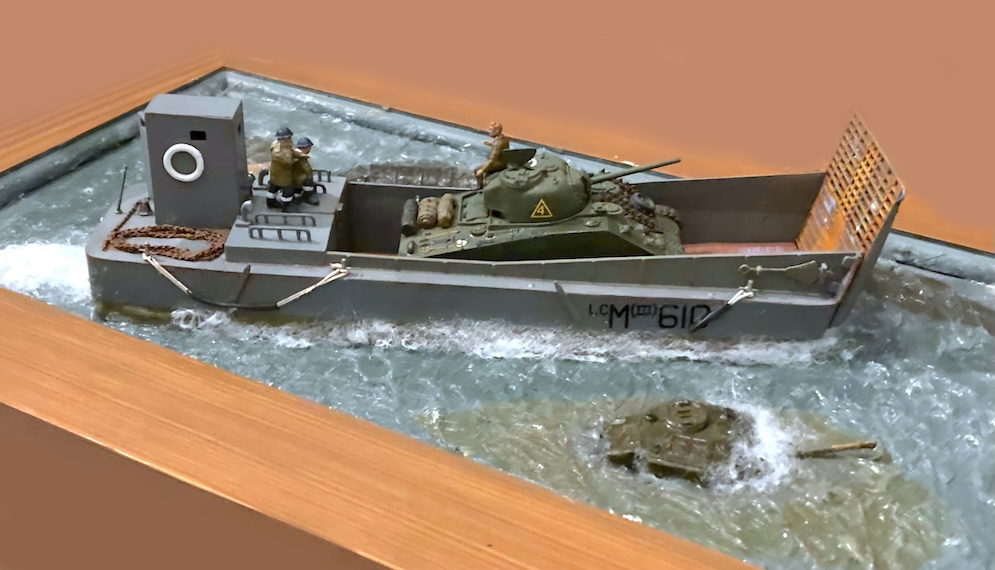
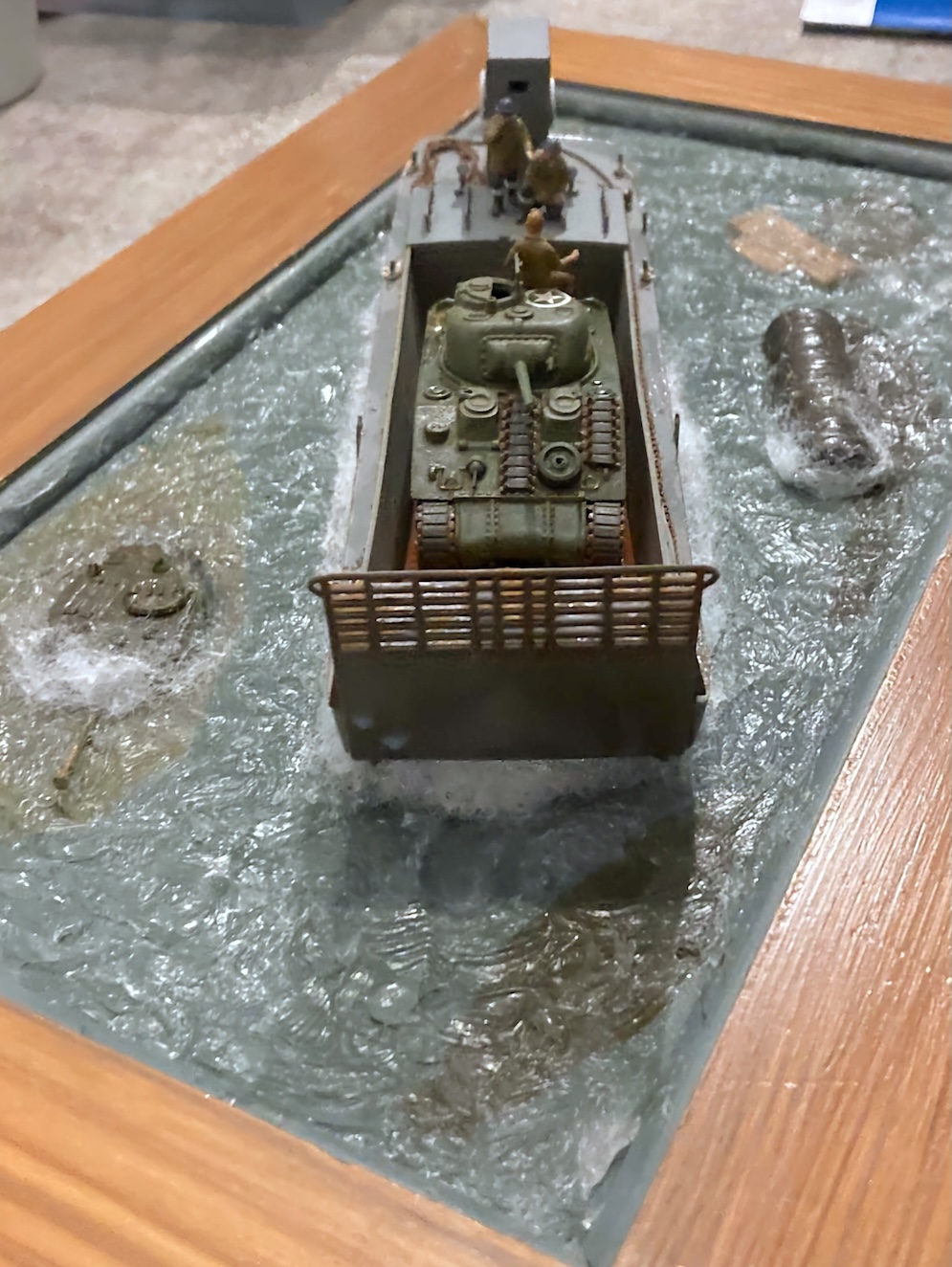
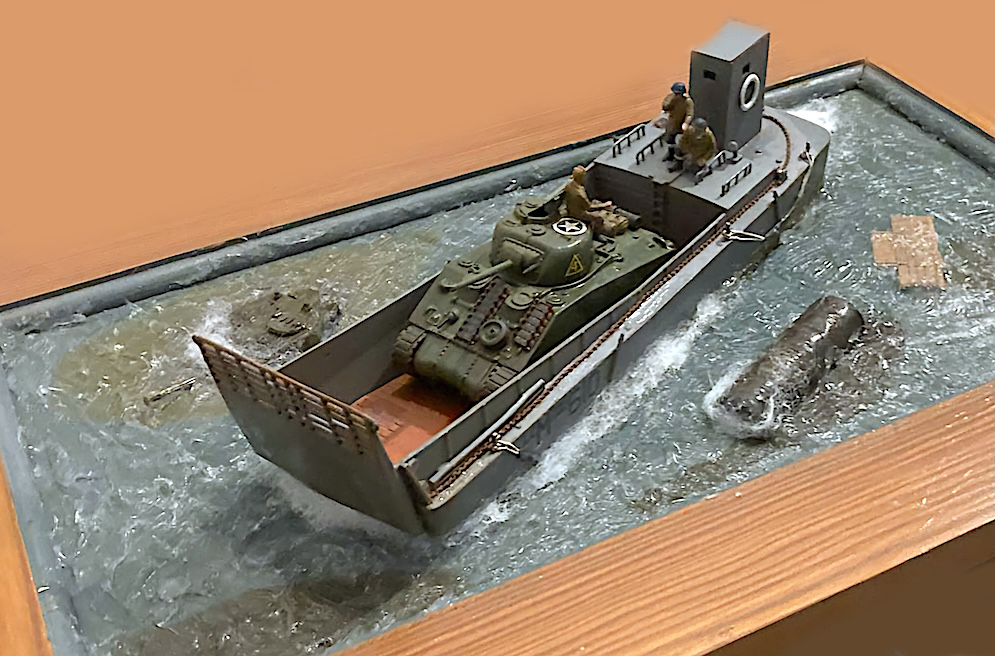

Ask a question or add feedback:
You must be logged in to post a comment.